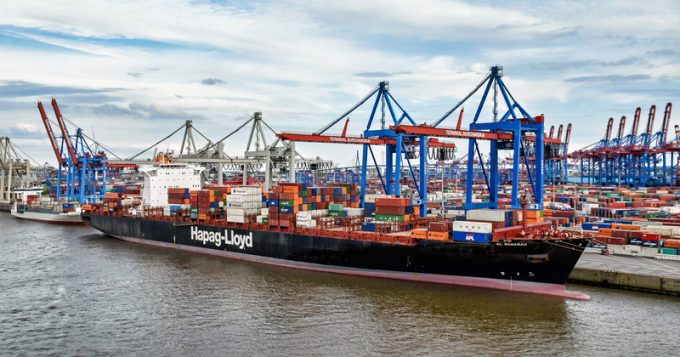Mid-year M&A snapshot: contract logistics in the driving seat
You reap what you sow
TFII: SOLID AS USUALMAERSK: WEAKENINGF: FALLING OFF A CLIFFAAPL: 'BOTTLENECK IN MAINLAND CHINA'AAPL: CHINA TRENDSDHL: GROWTH CAPEXR: ANOTHER SOLID DELIVERYMFT: HERE COMES THE FALLDSV: LOOK AT SCHENKER PERFORMANCEUPS: A WAVE OF DOWNGRADES DSV: BARGAIN BINKNX: EARNINGS OUTODFL: RISING AND FALLING AND THEN RISING
TFII: SOLID AS USUALMAERSK: WEAKENINGF: FALLING OFF A CLIFFAAPL: 'BOTTLENECK IN MAINLAND CHINA'AAPL: CHINA TRENDSDHL: GROWTH CAPEXR: ANOTHER SOLID DELIVERYMFT: HERE COMES THE FALLDSV: LOOK AT SCHENKER PERFORMANCEUPS: A WAVE OF DOWNGRADES DSV: BARGAIN BINKNX: EARNINGS OUTODFL: RISING AND FALLING AND THEN RISING

Shippers may be seething over perceived profiteering by shipping lines, but container ports remain more profitable and attractive to long-term investors, according to a new report.
Ocean Shipping Consultants’ (OSC) Port Sector Outlook 2021 paints a rosy picture for terminal operators, with volumes and profits holding steady despite the volatility from the Covid crisis.
“Shipping companies make for strong media interest, with high-profile consolidations and the evolution of vessel sizes dazzling casual observers,” OSC noted. “But the financial performance of ports is superior to shipping lines.
“Taking an anecdote from the de-listing of DP World, management decided it was meaningless to be listed when market participants fail to appreciate its business and strategy.”
Comparing Hamburg terminal operator HHLA with compatriot shipping line Hapag-Lloyd, for example, OSC said the latter had gained a third of its market capitalisation over the past 12 months, while HHLA lost 20% in the same period. This was despite the terminal operator having a consistently higher ebitda over the past half-decade.
“While shipping lines boosted their profitability in 2020, the earnings are more volatile than the port sector. Hence, for long-term investors, such as pension funds, the port sector matches the investment mandate of stable dividend/income-yielding investments,” OSC added.
Perhaps putting to bed previous fears that new port investments would be subdued, container ports are also leveraging their balance sheets for further expansion, which OSC described as a “sound strategy”.
For example, it said, “high-profile port operators had tapped into debt and private equity markets” for portfolio expansion, with $6.6bn raised last year.
“Deep-pocket investors secured 13 container port deals – just one shy of the total in 2019,” OSC noted, adding that all the deals announced in 2019 were fulfilled, which indicated investors saw Covid-19 as temporary crisis.
Tender processes also continued with concessions awarded in the “attractive” geographies of Africa, South Asia and South-east Asia, the report said, where regional box volume growth is expected to be above the global average of 3.5% a year until 2050.
OSC also noted the emerging vertical integration trend among container terminal operators, especially DP World, which has been busy getting into the feeder business and landside logistics operations.
OSC said vertical integration would reduce the volatility of port volumes, but cautioned: “Blending different revenue and margin sources could taper port operators’ profit margin in the near term.”
On the other hand, vertical targets can strengthen a terminal operator’s presence in a region by offering an integrated service to end customers, it added.
Meanwhile, the consultant highlighted last year’s relatively flat throughput at transhipment hubs as general cause for optimism for the port sector.
“Transhipment hubs are representative of trade volumes in a particular region. Flattish volume growth of transhipment hubs should feel like a jackpot for port operators in a pandemic, and there can be the confidence of a sharp increase in trade volume when the Covid-19 situation improves,” OSC claimed.
Comment on this article